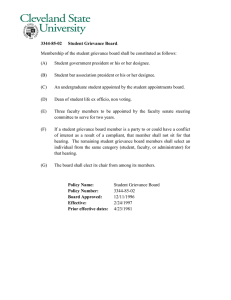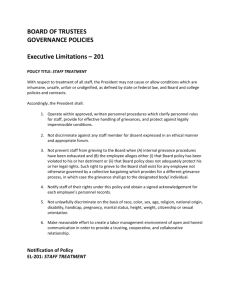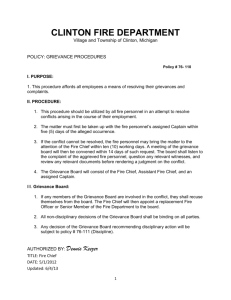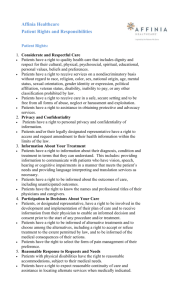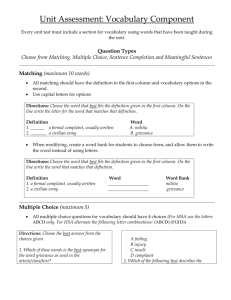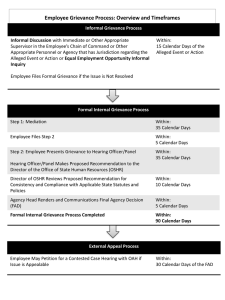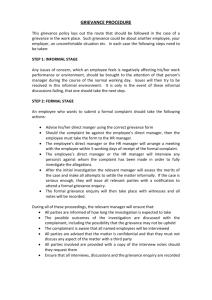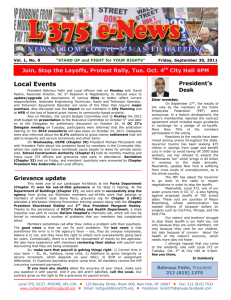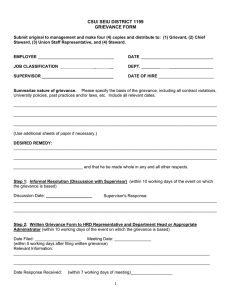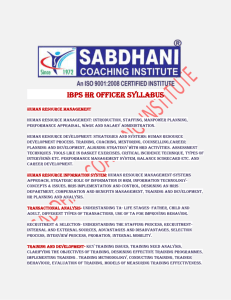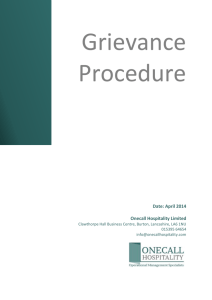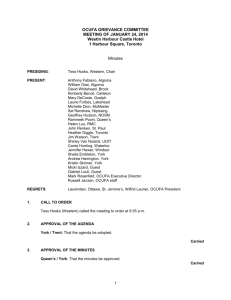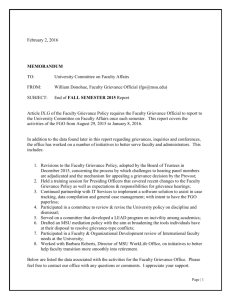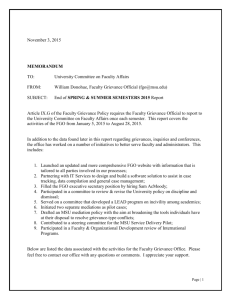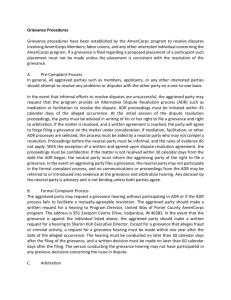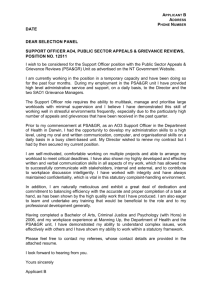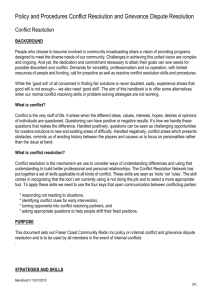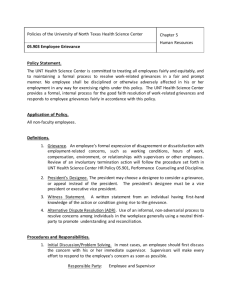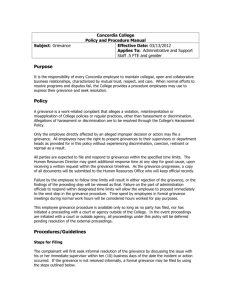Step by step guide to conducting a grievance hearing
advertisement
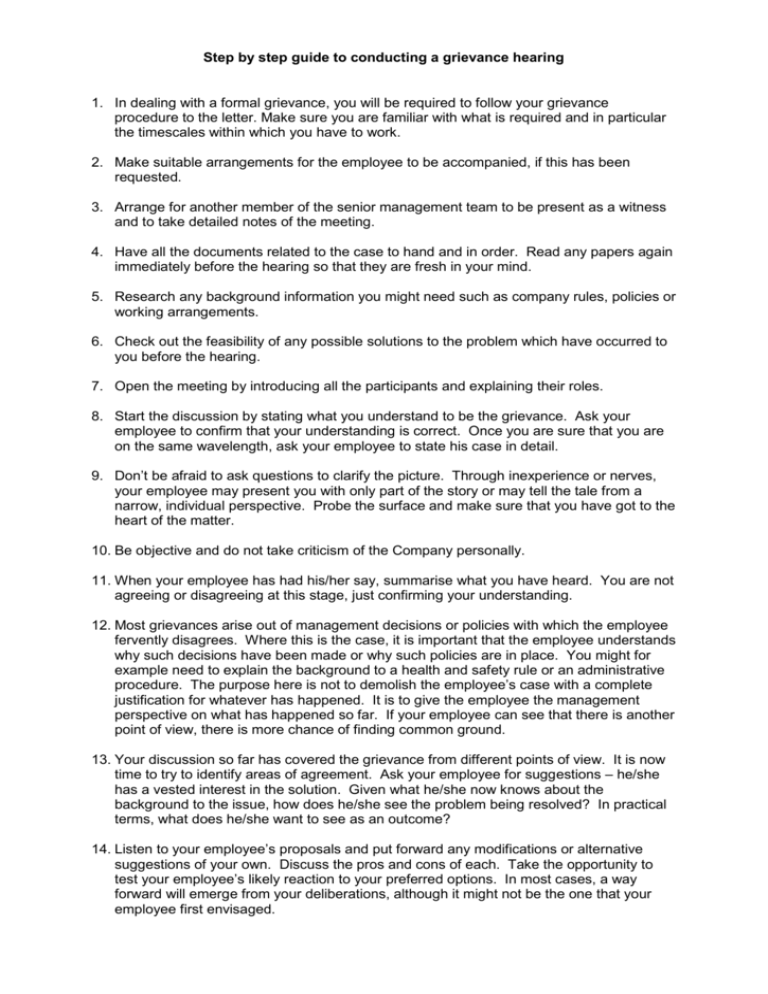
Step by step guide to conducting a grievance hearing 1. In dealing with a formal grievance, you will be required to follow your grievance procedure to the letter. Make sure you are familiar with what is required and in particular the timescales within which you have to work. 2. Make suitable arrangements for the employee to be accompanied, if this has been requested. 3. Arrange for another member of the senior management team to be present as a witness and to take detailed notes of the meeting. 4. Have all the documents related to the case to hand and in order. Read any papers again immediately before the hearing so that they are fresh in your mind. 5. Research any background information you might need such as company rules, policies or working arrangements. 6. Check out the feasibility of any possible solutions to the problem which have occurred to you before the hearing. 7. Open the meeting by introducing all the participants and explaining their roles. 8. Start the discussion by stating what you understand to be the grievance. Ask your employee to confirm that your understanding is correct. Once you are sure that you are on the same wavelength, ask your employee to state his case in detail. 9. Don’t be afraid to ask questions to clarify the picture. Through inexperience or nerves, your employee may present you with only part of the story or may tell the tale from a narrow, individual perspective. Probe the surface and make sure that you have got to the heart of the matter. 10. Be objective and do not take criticism of the Company personally. 11. When your employee has had his/her say, summarise what you have heard. You are not agreeing or disagreeing at this stage, just confirming your understanding. 12. Most grievances arise out of management decisions or policies with which the employee fervently disagrees. Where this is the case, it is important that the employee understands why such decisions have been made or why such policies are in place. You might for example need to explain the background to a health and safety rule or an administrative procedure. The purpose here is not to demolish the employee’s case with a complete justification for whatever has happened. It is to give the employee the management perspective on what has happened so far. If your employee can see that there is another point of view, there is more chance of finding common ground. 13. Your discussion so far has covered the grievance from different points of view. It is now time to try to identify areas of agreement. Ask your employee for suggestions – he/she has a vested interest in the solution. Given what he/she now knows about the background to the issue, how does he/she see the problem being resolved? In practical terms, what does he/she want to see as an outcome? 14. Listen to your employee’s proposals and put forward any modifications or alternative suggestions of your own. Discuss the pros and cons of each. Take the opportunity to test your employee’s likely reaction to your preferred options. In most cases, a way forward will emerge from your deliberations, although it might not be the one that your employee first envisaged. 15. Although you will have taken your employee’s suggestions on board, the decision you come to at the end of the hearing is yours. It has to be fair, acceptable and workable, so take time and consider carefully. You may want to adjourn the meeting for a short time and/or take specialist advice. In any event, make sure that you keep within the timescale prescribed by your grievance procedure. 16. When you deliver your decision, explain your reasoning. Answer any questions but do not enter into any lengthy debate. Your decision is made and your employee must now accept it or raise his grievance at a higher level. 17. Finally, confirm your decision in writing to your employee and at the same time, in case he/she is dissatisfied with your decision, explain the next stage of the grievance procedure.
